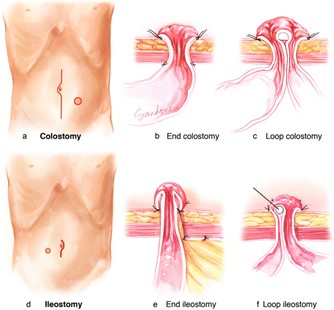The practical nurse (PN) is assisting with the preparation of a client for fecal diversion surgery. While inserting an indwelling urinary catheter, the client asks if the surgical opening will be visible. Which action should the PN implement?
Review the client's expectations of elimination after surgery.
Verify that the client had nothing by mouth (NPO) for the past 24 hours.
Ask the client if he finished the bowel sterilization prescription.
Determine if this is the first indwelling catheter the client has had.
The Correct Answer is A
This is the best action for the PN to implement because it addresses the client's question and provides an opportunity to educate the client about fecal diversion surgery and its outcomes. The PN should review the type, location, and appearance of the surgical opening (stoma) and explain how it will affect the client's elimination and body image.

B. Verifying that the client had nothing by mouth (NPO) for the past 24 hours is not relevant to the client's question and does not provide any information or support.
C. Asking the client if he finished the bowel sterilization prescription is not relevant to the client's question and does not provide any information or support.
D. Determining if this is the first indwelling catheter the client has had is not relevant to the client's question and does not provide any information or support.
Nursing Test Bank
Naxlex Comprehensive Predictor Exams
Related Questions
Correct Answer is B
Explanation
The correct answer is choice B: Culture for sensitive organisms.
- Choice A rationale:
- C-reactive protein level - C-reactive protein (CRP) is a blood test marker for inflammation in the body. While it could indicate an infection, it is not specific enough to identify the type of infection or the causative organism.
- Choice B rationale:
- Culture for sensitive organisms - When a wound has a moderate amount of yellow and green drainage and a foul odor, it is often a sign of a bacterial infection. A culture for sensitive organisms can help identify the specific bacteria causing the infection, which is crucial for determining the most effective treatment.
- Choice C rationale:
- Serum albumin - Serum albumin levels can indicate a person’s nutritional status. Low levels can slow wound healing, but they do not directly indicate the presence of an infection.
- Choice D rationale:
- Serum blood glucose (BG) level - High blood glucose levels can impair the immune response and slow wound healing, making a person more susceptible to infections. However, like CRP, it does not provide information about the specific organism causing the infection.
Correct Answer is C
Explanation
The correct answer is C. Oriented to person only.
Choice A rationale:
A blood pressure of 144/84 mmHg is slightly elevated but not critically high. While it is important to monitor, it does not immediately impact the instructions for morning care.
Choice B rationale:
An oxygen saturation measurement of 95 to 96% is within the normal range and indicates adequate oxygenation. This is important to monitor but does not require specific changes to morning care instructions.
Choice C rationale:
Being oriented to person only indicates a significant alteration in the client’s cognitive status, which is crucial for the UAP to be aware of. This affects the client’s ability to understand and follow instructions, and may require additional supervision and safety measures during care.
Choice D rationale:
A urinary output of 50 mL/hour is within the normal range (typically 30-50 mL/hour is considered adequate). While it is important to monitor, it does not necessitate immediate changes to morning care instructions.
: 1
Whether you are a student looking to ace your exams or a practicing nurse seeking to enhance your expertise , our nursing education contents will empower you with the confidence and competence to make a difference in the lives of patients and become a respected leader in the healthcare field.
Visit Naxlex, invest in your future and unlock endless possibilities with our unparalleled nursing education contents today
Report Wrong Answer on the Current Question
Do you disagree with the answer? If yes, what is your expected answer? Explain.
Kindly be descriptive with the issue you are facing.
